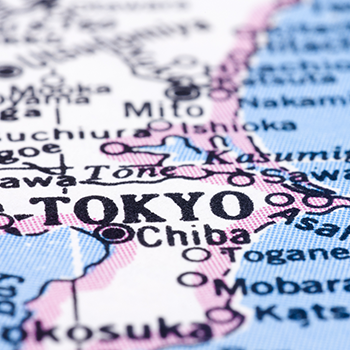According to Matt Kempner’s recent AthleticBusiness article, “Boosted by Mayor Kasim Reed's promise to kick in three-fourths of the upfront cost, leaders of the Atlanta Hawks are planning a $192.5 million renovation of Philips Arena aimed at wooing more young adults.”
In a statement made in the article, Hawks CEO Steve Koonin explains that “this will be the first arena designed for a millennial audience.”
What does he mean? Why are Koonin and his team spending millions to change Philips?
As we dove into the article further, we recognized why. We immediately understood and applaud the decisions made by the Hawks to make changes to their current arena.
They’ve accepted the need for change. The Hawks believe that change will help the organization achieve greater success down the road.
Koonin has a goal to be “a top-tier” arena, and he feels like they just aren’t there, yet. So, the Hawks see what’s holding the organization back, and they’re going for it and making the changes.
According to Koonin, the arena was “designed in the '90s, and I think a lot of the pieces are antiquated. It is not a top-tier arena, which makes it tough to capture the best fan experience."
This fact could be a hard pill to swallow for any organization and their executive team. But, it’s commendable nonetheless to see the Hawks conceding to their weaknesses.
To recognize where your organization needs to change is something big to overcome. It’s also a great lesson you need to know.
Embracing the need for continuous change is the key to long-term success for your operation.
Atlanta Hawks Aim to Craft a “Social Occasion.”
Let’s take a look at what change looks like for the Hawks.
Kempner’s article explains that “The current setup at Philips Arena includes more than 100 suites stacked atop one another like a moldy layer cake you can stare at but not eat. The higher up you go, the harder it is to find someone willing to pay for the distant view. It's a design innovation I'm told was meant to serve the competing interests of basketball and hockey, which are best viewed at different levels.”
In response to the current layout and purpose of the arena, Koonin focuses on making changes that target millennials.
The article explains that, “Koonin is eyeing renovations that could cut the number of big suites by about half -- they each fit 20 people -- and scatter what remains along with new, more intimate premium seating around the arena.”
"We know our customer wants to make this a social occasion." – Steve Koonin, CEO, Atlanta Hawks
That’s the ticket!
Koonin appreciates the need to change to increase the arena’s success. It’s going against the status quo of most organizations.
But, it’s necessary.
He recognizes the need to create an environment that elicits a “social occasion.” This goal is what he’s striving for – and he’s not wasting any time to work towards it.
The 59-year-old Koonin isn’t a millennial himself, so he’s not at an advantage in understanding the millennial fan. But, as a proactive leader, he realizes the future of the business is different and mandates he makes different choices.
‘Change’ is necessary to be the best.
Koonin knows this. Do you?
What You Need to Know About Change
Complacency kills.
We’re sure you’ve heard this adage before. But, how often do you refer to it throughout your day and your career? Do you even see the need for change?
If not, you could be in a rut without realizing it, which makes reading this article one of the most important parts of your day.
How?
We tend to get lost in the day-to-day activities to keep our head afloat.
This disparity in focus leads you on a path of reactive operations as opposed to running your operation proactively.
You probably overlook the need for change, because it’s hard to face. But, the most difficult things to commit to are often the most important.
- When is the last time you took a critical look at your operation?
- When is the last time you sat down, gathered your team, and spent hours combing through your operation?
- When is the last time you remember making a change that led to increases in performance?
When?
OK, so it’s been a while? Let’s change the future outcome now.
Do you know about Proactive Operations? If not, you should read more about it here.
It’s your answer to help solve the complexities of change. It’s how you can start the process of change with structure.
Yes, that’s right, we’re giving you a framework to put change in motion.
We get it; you’re not able to make million-dollar renovations to your organization like the Atlanta Hawks. But, that doesn’t mean you can’t change.
We’re sure you’ll make mistakes along the way too. That’s OK. It happens. It’s a part of the process you must go through.
But, trust us – it’s all worth it!
You can make consistent, incremental changes to your operation starting today. You can do it by following the structured approach of Proactive Operations.
Use Proactive Operations to Help With Operational Change
No one says change is easy. We’re not saying that now either.
Many times it’s hard to even get started because you don’t know where to start, right?
Not today – not anymore.
Here’s how: the Proactive Operations methodology gives you a framework for addressing your current operation. It helps you improve to maximize your performance.
How’s that for ‘change’?
Proactive Operations works, whether you’re starting from scratch, making improvements, or knocking the whole thing down and starting over.
It helps you follow a guideline for what needs to happen throughout your operation to achieve greater efficiency.
Proactive Operations envelops three areas for transforming.
- Start with your strategy. You’ll scrutinize your process using the ACDA Principle™, which is made up of awareness, communication, documentation, and analysis. Ask questions about your process, and see where change is necessary for success to become inevitable. You can learn more about it in our article on Proactive Operations we link to above.
- Then, take a look at your infrastructure. How does information flow throughout your departments? Is everything organized on a physical level that allows for maximum performance? Is communication efficient and without bottlenecks? Do changes need to be made to enhance this?
- Finally, implement various See what you need to increase efficiency. Change your methods for managing incidents by using an incident management system. Stop relying on staff to locate supervisors when something happens when you can integrate text communication into your guest services. The faster you implement solutions, the faster you get over the hurdle of adoption by your staff and move to Proactive Operations.
You can start the process of change today, or you can wait and see what happens.
But, you already know that’s dangerous – don’t you?
Over to You
Taking the first step is always better than not doing anything. We’re aware it can be overwhelming and – in the case of the Atlanta Hawks – a lot of work. But, taking the steps that most operations won’t take is what makes Proactive Operations the best in the world.
Embracing change is what makes these operations best suited to provide their guest with a safe and enjoyable environment.
Now that you know change is necessary, what’s your move?




